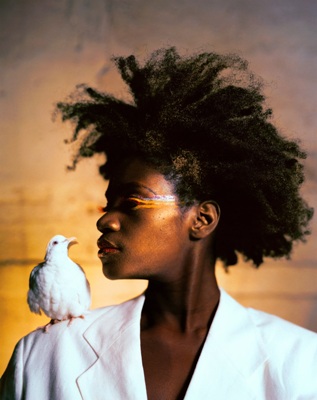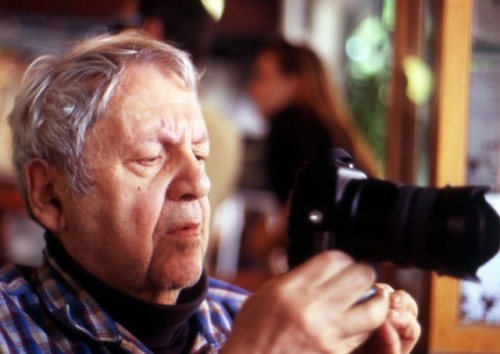For most of us, the world is a very visual place. We are constantly surrounded by images; taken all together, they compose that picture we call reality. Most of the time, as we move through this complex collage, we don’t stop to think about what we see and how these images – coincidental, composed, natural, commercial, artistic and arbitrary, shape not only what we see, but the way we see, including our view of that image appearing in the mirror.
Art invites us to step out of the ordinary to look anew at the world. Two very different films, both to be screened at EPOS 6 International Art Film Festival this coming Saturday, March 14, 2015, take the viewer on a vision-altering journey, and I strongly recommend them both.

In Through a Lens Darkly: Black Photographers and the Emergence of a People, filmmaker Thomas Allen Harris looks into his family photo album, symbolically and literally, to examine the role of photography in shaping identity. Drawing on a vast repository of photographs from art photography to studio photos, snapshots and family photos culled from a multitude of sources, even if there were no audio track at all this would still be an informative and fascinating film on the image and changing identity of African-Americans in the United States, in their own eyes and in the eyes of others. Harris’ mellifluous voice draws us into his personal story, which connects to a wider history, represented in the film by noted historians and photographers. The film was inspired by Deborah Willis’ study of black photographers, Reflections in Black: Black Photographers from 1840 – Present (2002), and Willis is a strong presence in the film.
The film raises many crucial and pertinent questions about the ways in which one’s identity is shaped by the images available and accessible, the ways in which identity can be imposed on a people, and the many different ways in which black photographers have chosen to define their sense of self and of a people. As a minority struggling for self-hood, does one emulate the imagery of the majority? Does one seek out a different visual vocabulary? The agency of self-definition through image making inevitably raises issues of self-censorship. Harris devotes an interesting segment to the issue of gender identity and sexuality, and the different ways that it is expressed and suppressed in the personal and national family album.
Many of the images shown are severely disturbing, such as photographs of white people at a lynching, standing around casually, as if they were at a picnic, perhaps even looking proud. In the earlier photographs, there is a stark contrast between externally created images of black people eating watermelon or stealing a chicken, and the studio portraits, wedding photos and other visual mementos of black life in the United States through the years. Harris’ film is a significant historical document, both of black leaders and image-shapers such as Sojourner Truth, Frederick Douglas, Booker T. Washington, W.E.B. Du Bois, and others, and black photographers, from the earliest discovered daguerreotypes to the Harlem Renaissance, and contemporary photographers. Through a Lens Darkly is a reflection on the power of photography and photographers, both amateur and professional. Something to ponder as you pull out your phone to take a picture.

If Thomas Allen Harris’ film takes a wide and long view, encompassing the visual history of a people from the mid-19th century to the present, Thomas Leach’s film, is a close-up of photographer Saul Leiter (1923 – 2013), a one-on-one conversation between the filmmaker and his lively, warm, endearingly honest and sometimes prickly subject. In No Great Hurry: 13 Lessons in Life with Saul Leiter lets the viewer into the intimate chambers of the photographer, messy, chaotic, full of negatives, prints and the paraphernalia of a life. Leiter’s photographs from the 40s and 50s were to become known, along with the work of other photographers, as the New York School – yet he never really made the leap from critical recognition to fame and fortune. He worked as a fashion photographer for many years, and his photographs were published in Elle, British Vogue, Esquire and Harper’s Bazaar. His street photographs, featured in the film, have a painterly quality, reminiscent of Abstract Expressionism. In conversation, his modesty and humor shine through every word. In words and photographs, Leiter offers a distinct and compelling way of looking at life. It’s a pleasure and a privilege to become acquainted with the artist through this film. To quote Leiter: “The one nice thing about photography is it teaches you to look, it teaches you to appreciate all kinds of things.”
EPOS 6 will take place from March 11 – 14, 2015.
In No Great Hurry: 13 Lessons in Life with Saul Leiter will be screened on Saturday, March 14th, at 10:00, in the Kaufman Auditorium, Tel Aviv Museum of Art. The film is in English, with Hebrew subtitles. Tickets may be purchased via this link.
Through a Lens Darkly: Black Photographers and the Emergence of a People will be screened on Saturday, March 14th, at 22:00, in the Kaufman Auditorium, Tel Aviv Museum of Art. The film is in English, with Hebrew subtitles. Tickets may be purchased via this link.
Through a Lens Darkly: Black Photographers and the Emergence of a People
(USA, 90 min, 2014, English with Hebrew subtitles) Directed by Thomas Allen Harris; Production: Thomas Allen Harris, Deborah Willis, Ann Bennett, Don Perry; Screenwriters: Thomas Allen Harris, Don Perry, Paul Carter Harrison; Cinematography: Martina Radwan; Editor: Matthew Cohn, K. A. Miille; Production Company: Chimpanzee Productions.
In No Great Hurry: 13 Lessons in Life with Saul Leiter
(UK, 75 min, 2014, English with Hebrew subtitles) Directed by Thomas Leach; Production: Thomas Leach, Margit Erb; Cinematography: Thomas Leach; Editor: Kate Baird, Johnny Rayner.





